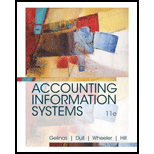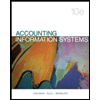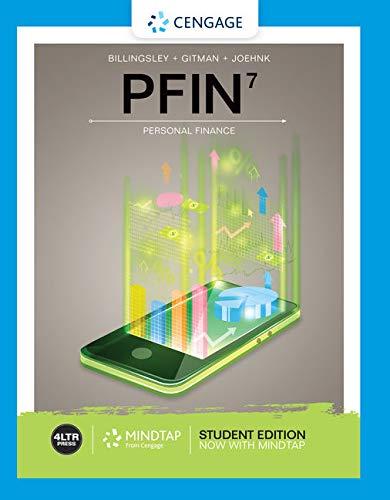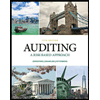
Accounting Information Systems
11th Edition
ISBN: 9781337552127
Author: Ulric J. Gelinas, Richard B. Dull, Patrick Wheeler, Mary Callahan Hill
Publisher: Cengage Learning
expand_more
expand_more
format_list_bulleted
Question
Chapter 5, Problem 11DQ
a)
Summary Introduction
To explain: The student ID codes used at the college.
Introduction:
Database management systems (DBMS):
It is computer software for creating and managing databases. The DBMS provides a way for the users to create, update, retrieve and manage the data present in the database. It also supports the administration and use of the database on different platforms.
b)
Summary Introduction
To explain: The ICR codes used by the banking industry.
c)
Summary Introduction
To explain: The customer codes.
Expert Solution & Answer
Want to see the full answer?
Check out a sample textbook solution
Students have asked these similar questions
no ai .What is the enterprise value of a business?*
The market value of equity of the business
The book value of equity of the business
The entire value of the business without giving consideration to its capital structure
The entire value of the business considering its capital structure
10. The concept of time value of money is that*
The cash flows that occur earlier are more valuable than cash flows that occur later
The cash flows that occur earlier are less valuable than cash flows that occur later
The longer the time cash flows are invested, the more valuable they are in the future
The future value of cash flows are always higher than the present value of the cash flows .
9. Which of the following is true when a bond is trading at a discount?*
Coupon Rate > Current Yield > Yield to Maturity
Coupon Rate < Current Yield < Yield to Maturity
Coupon Rate = Current Yield = Yield to Maturity
Coupon Rate < Current Yield = Yield to Maturity.
Chapter 5 Solutions
Accounting Information Systems
Ch. 5 - Prob. 1RQCh. 5 - Prob. 2RQCh. 5 - Prob. 3RQCh. 5 - What are the most important limitations of the...Ch. 5 - Prob. 5RQCh. 5 - Prob. 6RQCh. 5 - Prob. 7RQCh. 5 - Prob. 8RQCh. 5 - Prob. 9RQCh. 5 - Prob. 10RQ
Ch. 5 - Prob. 11RQCh. 5 - Prob. 12RQCh. 5 - Prob. 13RQCh. 5 - What is a partial dependency?Ch. 5 - Prob. 15RQCh. 5 - Prob. 16RQCh. 5 - Prob. 17RQCh. 5 - What factors distinguish DSS from EIS?Ch. 5 - Describe the basic differences between ES and NN.Ch. 5 - What role do intelligent agents play in the...Ch. 5 - Why have knowledge management systems become so...Ch. 5 - Prob. 22RQCh. 5 - Prob. 23RQCh. 5 - Prob. 1DQCh. 5 - How has the technological availability and...Ch. 5 - Prob. 3DQCh. 5 - Prob. 4DQCh. 5 - What are the differences between a logical view...Ch. 5 - Prob. 6DQCh. 5 - Prob. 7DQCh. 5 - Prob. 8DQCh. 5 - Prob. 9DQCh. 5 - Prob. 10DQCh. 5 - Prob. 11DQCh. 5 - Prob. 12DQCh. 5 - Prob. 1SPCh. 5 - Prob. 2SPCh. 5 - Prob. 7PCh. 5 - Prob. 12PCh. 5 - Use the Internet to research knowledge management...
Knowledge Booster
Similar questions
- When the price of a bond is above the face value, the bond is said to be* Trading at par Trading at a premium Trading at a discount Trading below pararrow_forward7. What is a par value of a bond?* The amount borrowed by the issuer of the bond and returned to the investors when the bond matures The overall return earned by the bond investor when the bond matures The difference between the amount borrowed by the issuer of bond and the amount returned to investors at maturity The size of the coupon investors receive on an annual basisarrow_forwardWhat is an annuity?* An investment that has no definite end and a stream of cash payments that continues forever A stream of cash flows that start one year from today and continue while growing by a constant growth rate A series of equal payments at equal time periods and guaranteed for a fixed number of years A series of unequal payments at equal time periods which are guaranteed for a fixed number of yearsarrow_forward
- If you were able to earn interest at 3% and you started with $100, how much would you have after 3 years?* $91.51 $109.27 $291.26 $103.00arrow_forwardNo AI 2. The formula for calculating future value (FV) is* FV = PV/(1+r)^n FV = PV/(1+r)*n FV = PV x (1+r)^n FV = PV x (1+r)*narrow_forwardDividend??? solnarrow_forward
arrow_back_ios
SEE MORE QUESTIONS
arrow_forward_ios
Recommended textbooks for you
 Pkg Acc Infor Systems MS VISIO CDFinanceISBN:9781133935940Author:Ulric J. GelinasPublisher:CENGAGE L
Pkg Acc Infor Systems MS VISIO CDFinanceISBN:9781133935940Author:Ulric J. GelinasPublisher:CENGAGE L Pfin (with Mindtap, 1 Term Printed Access Card) (...FinanceISBN:9780357033609Author:Randall Billingsley, Lawrence J. Gitman, Michael D. JoehnkPublisher:Cengage Learning
Pfin (with Mindtap, 1 Term Printed Access Card) (...FinanceISBN:9780357033609Author:Randall Billingsley, Lawrence J. Gitman, Michael D. JoehnkPublisher:Cengage Learning- Business/Professional Ethics Directors/Executives...AccountingISBN:9781337485913Author:BROOKSPublisher:Cengage
 Auditing: A Risk Based-Approach (MindTap Course L...AccountingISBN:9781337619455Author:Karla M Johnstone, Audrey A. Gramling, Larry E. RittenbergPublisher:Cengage Learning
Auditing: A Risk Based-Approach (MindTap Course L...AccountingISBN:9781337619455Author:Karla M Johnstone, Audrey A. Gramling, Larry E. RittenbergPublisher:Cengage Learning

Pkg Acc Infor Systems MS VISIO CD
Finance
ISBN:9781133935940
Author:Ulric J. Gelinas
Publisher:CENGAGE L

Pfin (with Mindtap, 1 Term Printed Access Card) (...
Finance
ISBN:9780357033609
Author:Randall Billingsley, Lawrence J. Gitman, Michael D. Joehnk
Publisher:Cengage Learning


Business/Professional Ethics Directors/Executives...
Accounting
ISBN:9781337485913
Author:BROOKS
Publisher:Cengage

Auditing: A Risk Based-Approach (MindTap Course L...
Accounting
ISBN:9781337619455
Author:Karla M Johnstone, Audrey A. Gramling, Larry E. Rittenberg
Publisher:Cengage Learning
